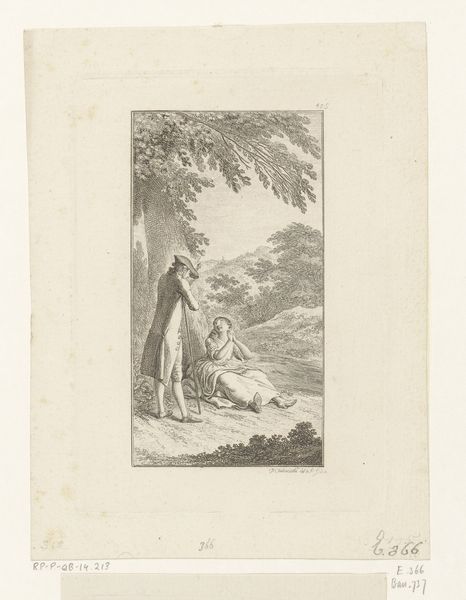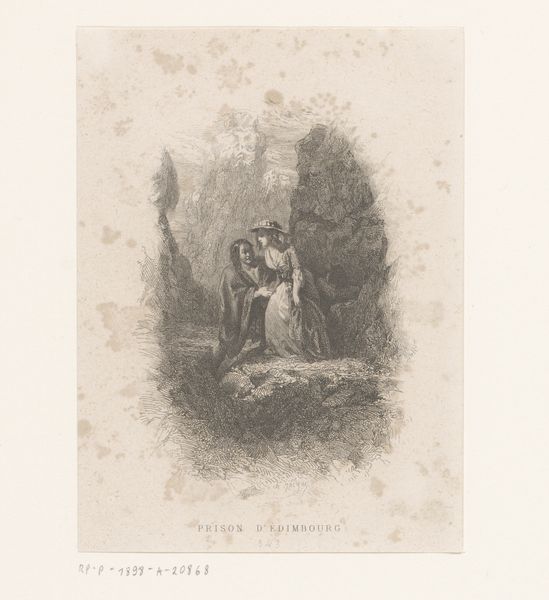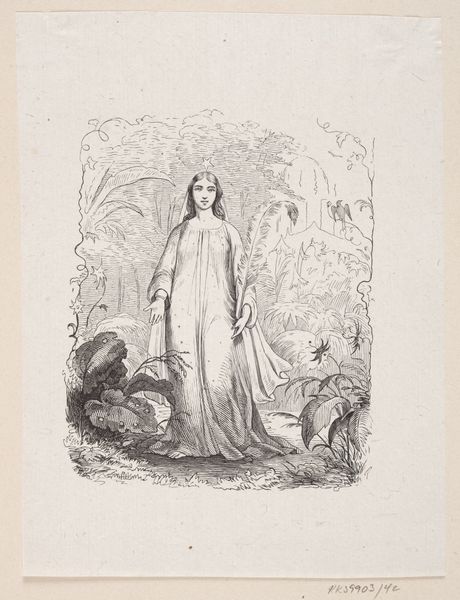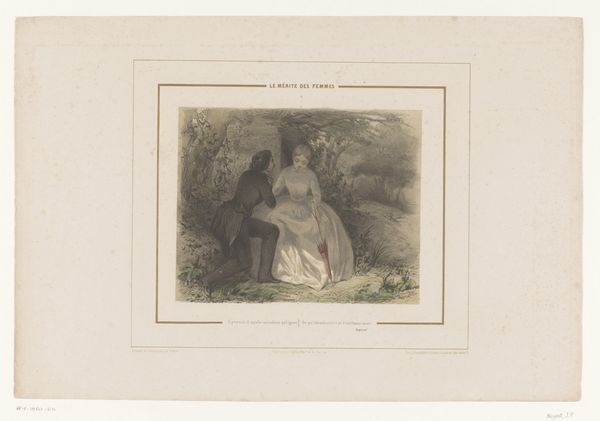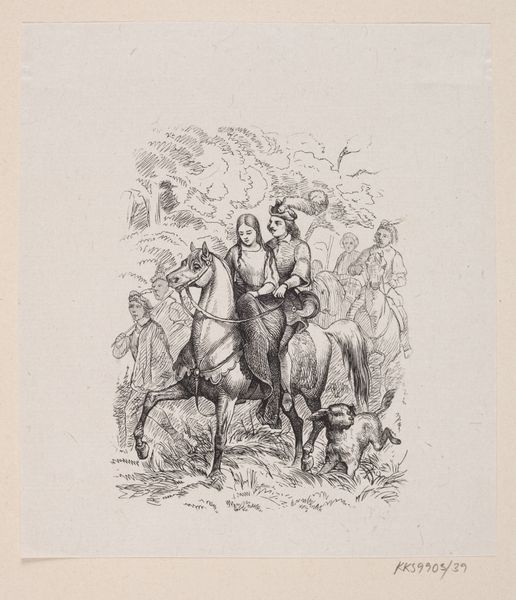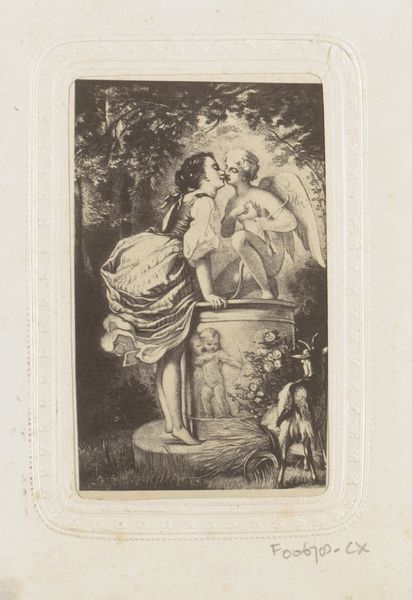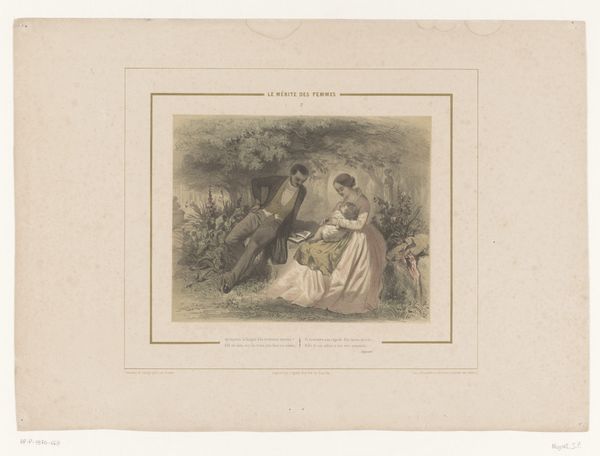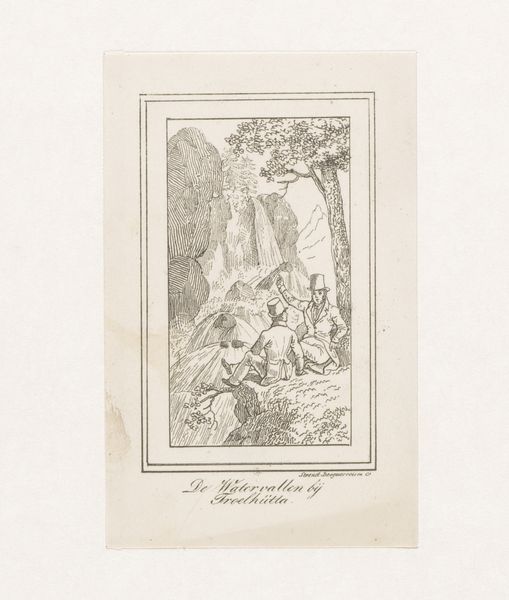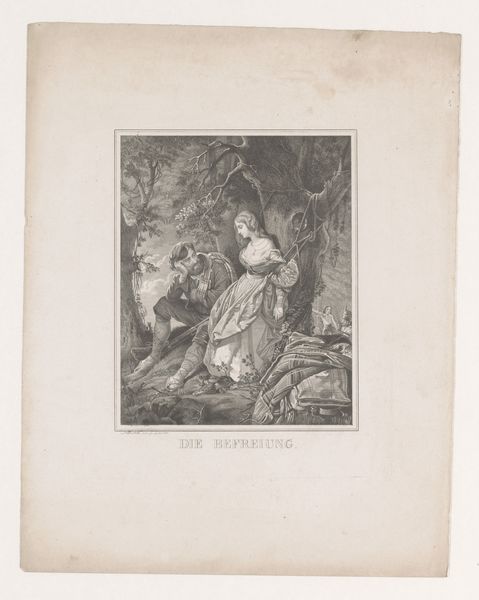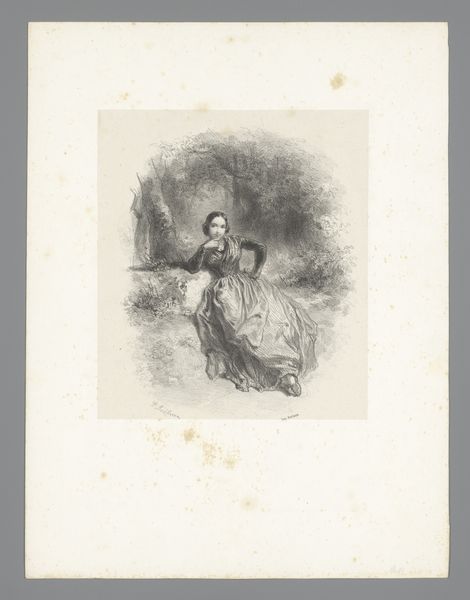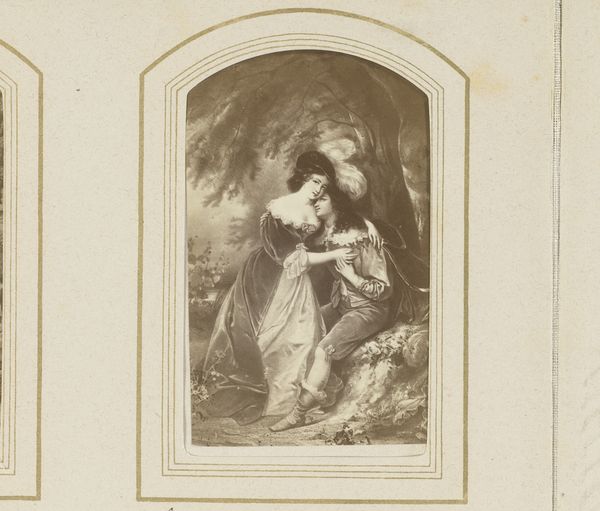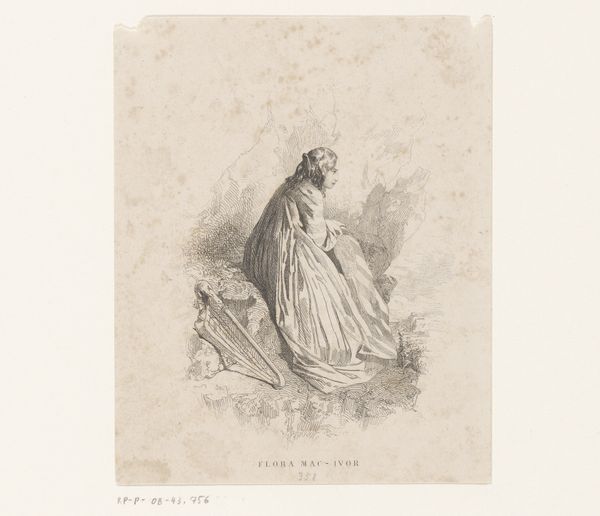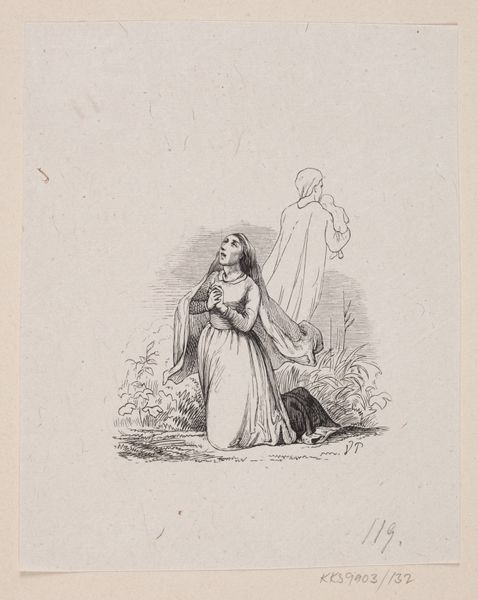
drawing, paper, ink, pencil
#
pencil drawn
#
drawing
#
narrative-art
#
pencil sketch
#
landscape
#
figuration
#
paper
#
ink
#
pencil drawing
#
romanticism
#
pencil
Dimensions: height 142 mm, width 104 mm
Copyright: Rijks Museum: Open Domain
This etching, titled 'Vrouw leunend tegen een rotswand', was created by Charles Jacque in the 19th century, using a process that was relatively new at the time. Think about the making; an etching starts with a metal plate, coated in wax. The image is then scratched into the wax, exposing the metal beneath. This is then submerged in acid, which bites into the exposed lines, creating grooves. Ink is applied, filling these grooves, and then the surface is wiped clean. Finally, the plate is pressed onto paper, transferring the ink and creating the print. This was a revolutionary process because it allowed for relatively easy reproduction. In earlier eras, artworks were unique and available only to the wealthy. With etching, images could be disseminated more widely, reflecting the rise of a middle class and the beginnings of mass media. The amount of work involved in the process reflects the socio-economic changes of the time. It challenges traditional notions of value tied to unique, handcrafted art.
Comments
No comments
Be the first to comment and join the conversation on the ultimate creative platform.
